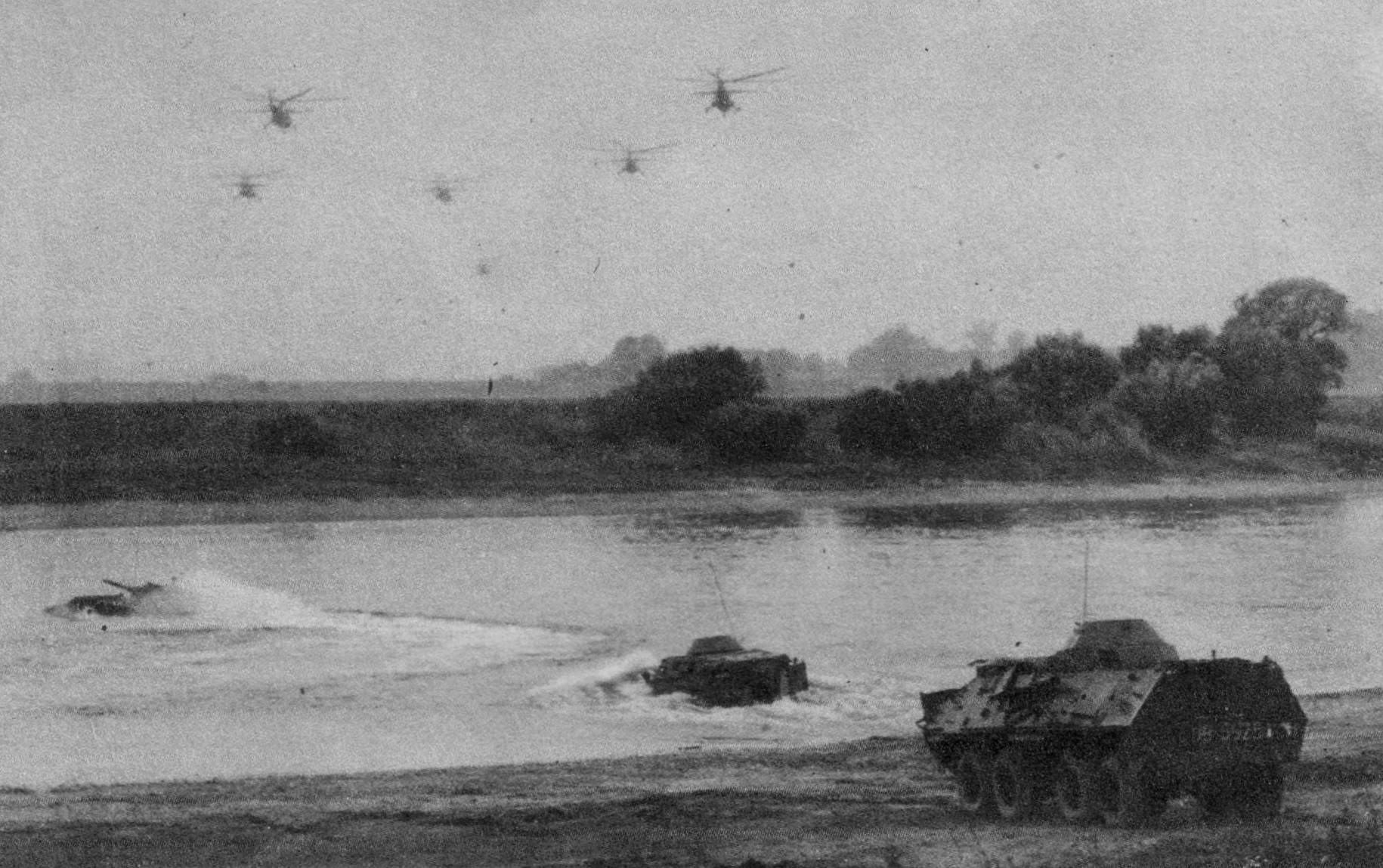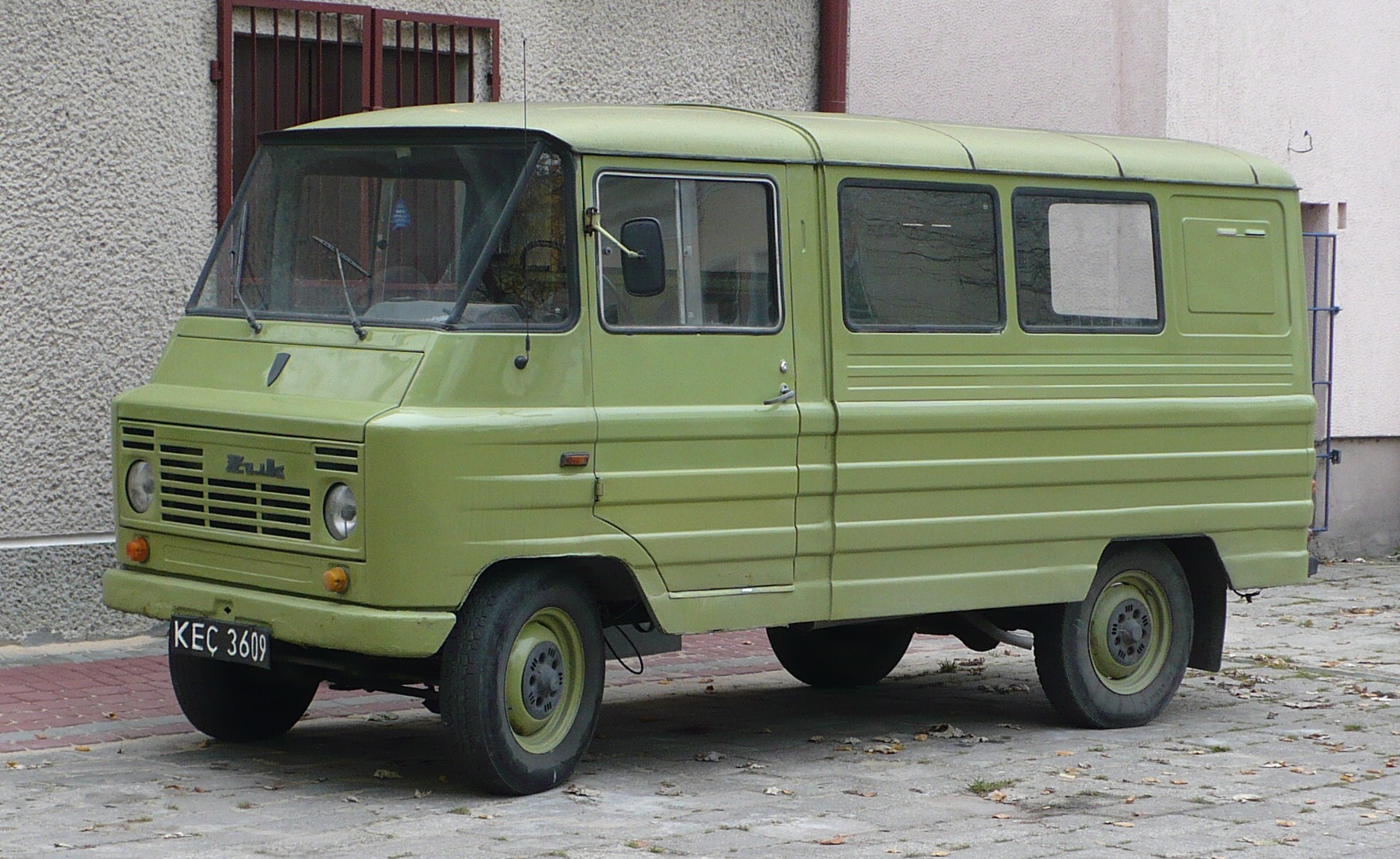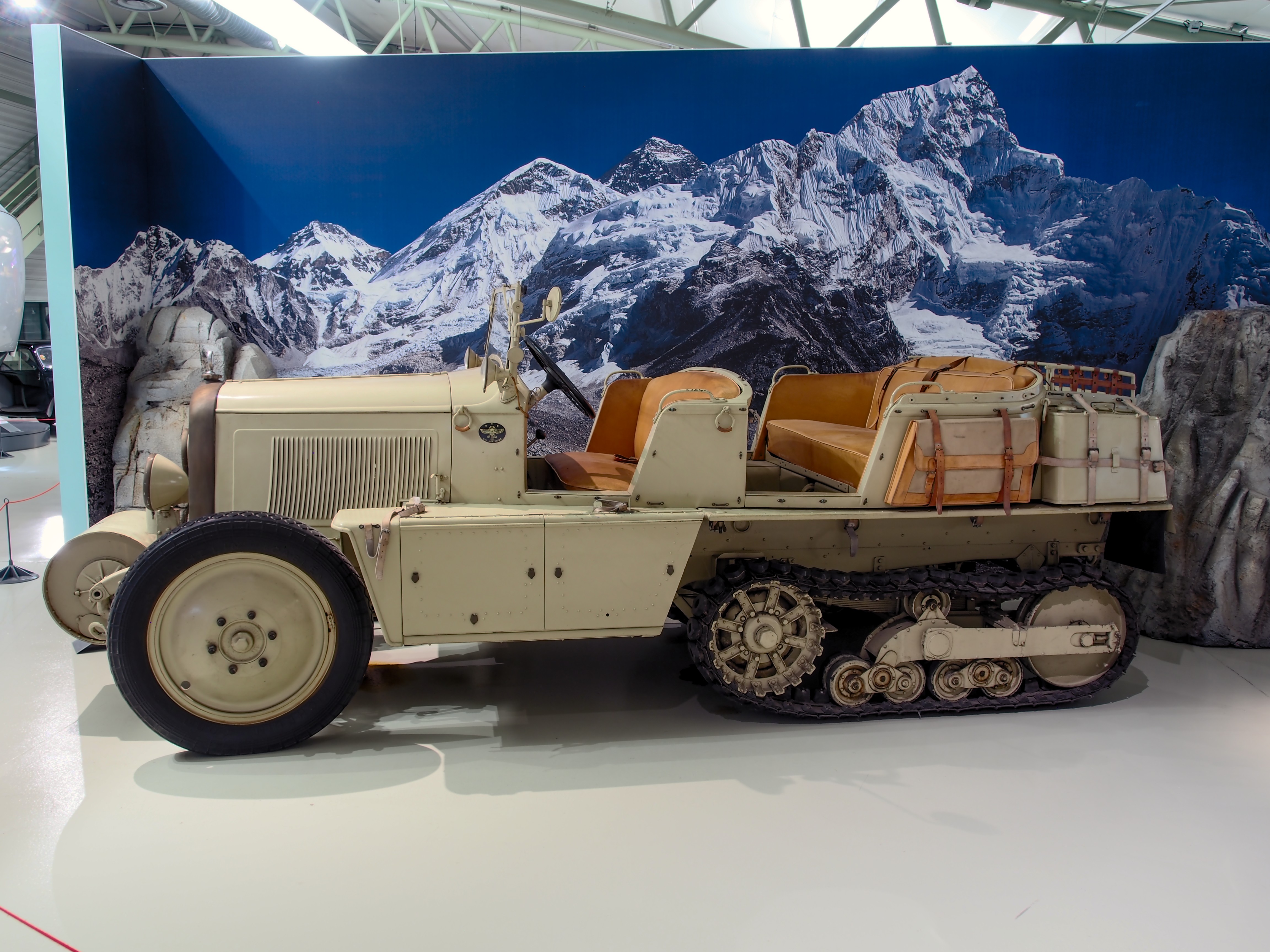|
OT-64 SKOT
The OT-64 SKOT (Czech acronym for: ''Střední Kolový Obrněný Transportér'', and/or Polish Średni ''Kołowy Opancerzony Transporter'' – medium wheeled armoured transporter) is an amphibious, armored personnel carrier (8x8), developed jointly by Poland ( PRL) and Czechoslovakia ( ČSSR) well into the 1960s. Until the early 1970s Czechoslovakia and Poland produced around 4,500 OT-64 SKOTs of all variants, just under a third of which were exported.BURIAN, Michal; DÍTĚ, Josef; DUBÁNEK, Martin. OT-64 SKOT: historie a vývoj obrněného transportéru. 1. vyd. Praha: Grada, 2010.Kajetanowicz Jerzy, Transporter opancerzony SKOT i jego odmiany produkowane w Polsce, Zeszyty Naukowe WSOWL 2016, nr 2Kubiaczyk C., Transporter opancerzony SKOT, A. Karaś, W. Stefanowska (red.), J. Magnuski, Seria: Typy broni i uzbrojenia, vol. 9, Warszawa: Wydawnictwo Ministerstwa Obrony Narodowej, 1971 In 2002, the modernization of the SKOT transporter began in Poland. The work resulted in the KTO R ... [...More Info...] [...Related Items...] OR: [Wikipedia] [Google] [Baidu] |
Czechoslovak Socialist Republic
The Czechoslovak Socialist Republic, ČSSR, formerly known from 1948 to 1960 as the Czechoslovak Republic or Fourth Czechoslovak Republic, was the official name of Czechoslovakia from 1960 to 29 March 1990, when it was renamed the Czechoslovak Federative Republic, sk, Česko-slovenská federatívna republika, ČSFR. On 23 April 1990, it became the Czech and Slovak Federative Republic, sk, Česká a Slovenská Federatívna Republika, ČSFR. From 1948 until the end of November 1989, the country was under Communist rule and was regarded as a satellite state in the Soviet sphere of interest. Following the coup d'état of February 1948, when the Communist Party of Czechoslovakia seized power with the support of the Soviet Union, the country was declared a socialist republic when the Ninth-of-May Constitution became effective. The traditional name (''Czechoslovak Republic''), along with several other state symbols, were changed on 11 July 1960 following the implementation of the ... [...More Info...] [...Related Items...] OR: [Wikipedia] [Google] [Baidu] |
Armored Personnel Carrier
An armoured personnel carrier (APC) is a broad type of armoured military vehicle designed to transport personnel and equipment in combat zones. Since World War I, APCs have become a very common piece of military equipment around the world. According to the definition in the Treaty on Conventional Armed Forces in Europe, an APC is "an armoured combat vehicle which is designed and equipped to transport a combat infantry squad and which, as a rule, is armed with an integral or organic weapon of less than 20 millimetres calibre." Compared to infantry fighting vehicles (IFVs), which are also used to carry infantry into battle, APCs have less armament and are not designed to provide direct fire support in battle. Infantry units which travel in APCs are known as mechanized infantry. Some militaries also make a distinction between infantry units which use APCs and infantry units which use IFVs, with the latter being known as armoured infantry in such militaries. History The genesis o ... [...More Info...] [...Related Items...] OR: [Wikipedia] [Google] [Baidu] |
Czechoslovakia
, rue, Чеськословеньско, , yi, טשעכאסלאוואקיי, , common_name = Czechoslovakia , life_span = 1918–19391945–1992 , p1 = Austria-Hungary , image_p1 = , s1 = Czech Republic , flag_s1 = Flag of the Czech Republic.svg , s2 = Slovakia , flag_s2 = Flag of Slovakia.svg , image_flag = Flag of Czechoslovakia.svg , flag = Flag of Czechoslovakia , flag_type = Flag(1920–1992) , flag_border = Flag of Czechoslovakia , image_coat = Middle coat of arms of Czechoslovakia.svg , symbol_type = Middle coat of arms(1918–1938 and 1945–1961) , image_map = Czechoslovakia location map.svg , image_map_caption = Czechoslovakia during the interwar period and the Cold War , national_motto = , anthems = ... [...More Info...] [...Related Items...] OR: [Wikipedia] [Google] [Baidu] |
BMP-1
The BMP-1 is a Soviet amphibious tracked infantry fighting vehicle, in service 1966–present. BMP stands for ''Boyevaya Mashina Pyekhoty 1'' (russian: link=no, Боевая Машина Пехоты 1; БМП-1), meaning "infantry fighting vehicle, 1st serial model". The BMP-1 was the first mass-produced infantry fighting vehicle (IFV) of the Soviet Union. It was called the M-1967, BMP and BMP-76PB by NATO before its correct designation was known. The Soviet military leadership saw any future wars as being conducted with nuclear, chemical and biological weapons. A new design, like the BMP, combining the properties of an armored personnel carrier (APC) and a light tank would allow infantry to operate from the relative safety of its armoured, radiation-shielded interior in contaminated areas and to fight alongside it in uncontaminated areas. It would increase infantry squad mobility, provide fire support to them, and also be able to fight alongside main battle tanks. The BMP- ... [...More Info...] [...Related Items...] OR: [Wikipedia] [Google] [Baidu] |
Fabryka Samochodów Ciężarowych
The FSC Lublin Automotive Factory ( pl, Fabryka Samochodów Ciężarowych) commonly known as FSC, is a large motor vehicle factory in Poland established while the country was part of the Soviet Bloc. It was founded in 1950. The first vehicle left its assembly line on November 7, 1951. The factory was built on an open field in Lublin from the grounds up, to first produce light trucks and later vans, as well as vehicles for the military. History After the 1989 collapse of the communist system in Poland, and the establishment of a free market economy, the state-owned FSC factory began to establish links with companies outside Poland. In 1995 the factory entered a joint venture with the South Korean conglomerate Daewoo. It soon become a part of the new company Daewoo Motor Polska. In December 1995 the factory started assembling Daewoo Nexia passenger cars. Around 40,000 were produced before production ended in 1998. Daewoo also began a joint project with British manufacturer LDV ... [...More Info...] [...Related Items...] OR: [Wikipedia] [Google] [Baidu] |
Lublin
Lublin is the ninth-largest city in Poland and the second-largest city of historical Lesser Poland. It is the capital and the center of Lublin Voivodeship with a population of 336,339 (December 2021). Lublin is the largest Polish city east of the Vistula River and is about to the southeast of Warsaw by road. One of the events that greatly contributed to the city's development was the Polish-Lithuanian Union of Krewo in 1385. Lublin thrived as a centre of trade and commerce due to its strategic location on the route between Vilnius and Kraków; the inhabitants had the privilege of free trade in the Grand Duchy of Lithuania. The Lublin Parliament session of 1569 led to the creation of a real union between the Crown of the Kingdom of Poland and the Grand Duchy of Lithuania, thus creating the Polish–Lithuanian Commonwealth. Lublin witnessed the early stages of Reformation in the 16th century. A Calvinist congregation was founded and groups of radical Arians appeared in the city ... [...More Info...] [...Related Items...] OR: [Wikipedia] [Google] [Baidu] |
Prototype
A prototype is an early sample, model, or release of a product built to test a concept or process. It is a term used in a variety of contexts, including semantics, design, electronics, and Software prototyping, software programming. A prototype is generally used to evaluate a new design to enhance precision by system analysts and users. Prototyping serves to provide specifications for a real, working system rather than a theoretical one. In some design workflow models, creating a prototype (a process sometimes called materialization) is the step between the Formal specification, formalization and the evaluation of an idea. A prototype can also mean a typical example of something such as in the use of the derivation 'prototypical'. This is a useful term in identifying objects, behaviours and concepts which are considered the accepted norm and is analogous with terms such as stereotypes and archetypes. The word ''wikt:prototype, prototype'' derives from the Greek language, Greek ... [...More Info...] [...Related Items...] OR: [Wikipedia] [Google] [Baidu] |
World War II
World War II or the Second World War, often abbreviated as WWII or WW2, was a world war that lasted from 1939 to 1945. It involved the vast majority of the world's countries—including all of the great powers—forming two opposing military alliances: the Allies and the Axis powers. World War II was a total war that directly involved more than 100 million personnel from more than 30 countries. The major participants in the war threw their entire economic, industrial, and scientific capabilities behind the war effort, blurring the distinction between civilian and military resources. Aircraft played a major role in the conflict, enabling the strategic bombing of population centres and deploying the only two nuclear weapons ever used in war. World War II was by far the deadliest conflict in human history; it resulted in 70 to 85 million fatalities, mostly among civilians. Tens of millions died due to genocides (including the Holocaust), starvation, ma ... [...More Info...] [...Related Items...] OR: [Wikipedia] [Google] [Baidu] |
OT-810
The Sd.Kfz. 251 (''Sonderkraftfahrzeug 251'') half-track was a World War II German armored personnel carrier designed by the Hanomag company, based on its earlier, unarmored Sd.Kfz. 11 vehicle. The Sd.Kfz. 251 was designed to transport the ''Panzergrenadier'' (German mechanized infantry) into battle. Sd.Kfz. 251s were the most widely produced German half-tracks of the war, with at least 15,252 vehicles and variants produced by seven manufacturers. Some sources state that the Sd.Kfz. 251 was commonly referred to simply as "Hanomags" by both German and Allied soldiers after the manufacturer of the vehicle;Green, Michael. Anderson, Thomas. Schulz, Frank. ''German Tanks of World War II''. Zenith Imprint, 2000. this has been questioned, and may have been only a postwar label.Jentz, Thomas. Doyle, Hilary. ''Panzer Tracts, # 15-2: Mittlere Schuetzenpanzerwagen (Sd.Kfz.251)''. Panzer Tracts, 2005. German officers referred to them as ''SPW'' (''Schützenpanzerwagen'', or armored infantry ve ... [...More Info...] [...Related Items...] OR: [Wikipedia] [Google] [Baidu] |
Halftrack
A half-track is a civilian or military vehicle with regular wheels at the front for steering and continuous tracks at the back to propel the vehicle and carry most of the load. The purpose of this combination is to produce a vehicle with the cross-country capabilities of a tank and the handling of a wheeled vehicle. Performance The main advantage of half-tracks over wheeled vehicles is that the tracks reduce the pressure on any given area of the ground by spreading the vehicle's weight over a larger area, which gives it greater mobility over soft terrain like mud and snow, while they do not require the complex steering mechanisms of fully tracked vehicles, relying instead on their front wheels to direct the vehicle, augmented in some cases by track braking controlled by the steering wheel. It is not difficult for someone who can drive a car to drive a half-track, which is a great advantage over fully tracked vehicles, which require specialized training. Half-tracks thus fac ... [...More Info...] [...Related Items...] OR: [Wikipedia] [Google] [Baidu] |







